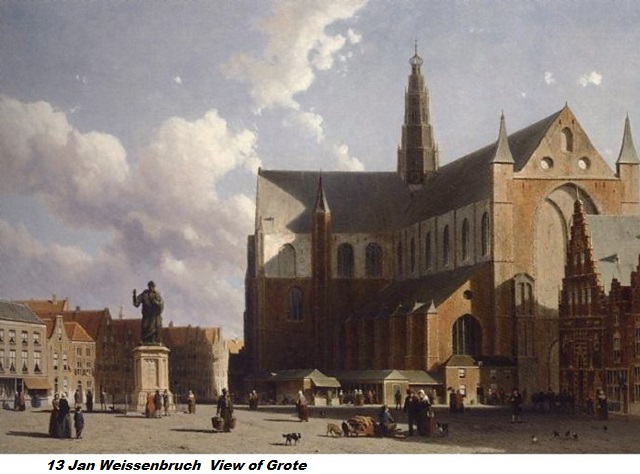Post-338
SUNDAY Feature on ART of Architecture by Gautam Shah
Jan Hendrik Weissenbruch (1824-1903) was a Dutch Painter of the Hague School. He is noted especially for his watercolours. Weissenbruch's early works show, strong influence of Dutch Romanticism. He found his inspiration in the surroundings of the city, where he resided. After 1875, Weissenbruch regularly returned to the wet landscapes, found in the areas surrounding Nieuwkoop and Noorden. He only travelled abroad once.
Weissenbruch's early landscapes and city scenes were in meticulous details. But over the years he began to attend to the form, through plain colours. He exploited shadows showing the sunlit parts on one face, and shadowed parts on the other side of the street, creating a balance. He often began with on-site preparatory architectural sketches. His Interiors, unlike architectural scenes are simple factual spaces, bereft of details of being lived-in areas.
.










%20Passers-by%20on%20the%20street.jpg)
























































